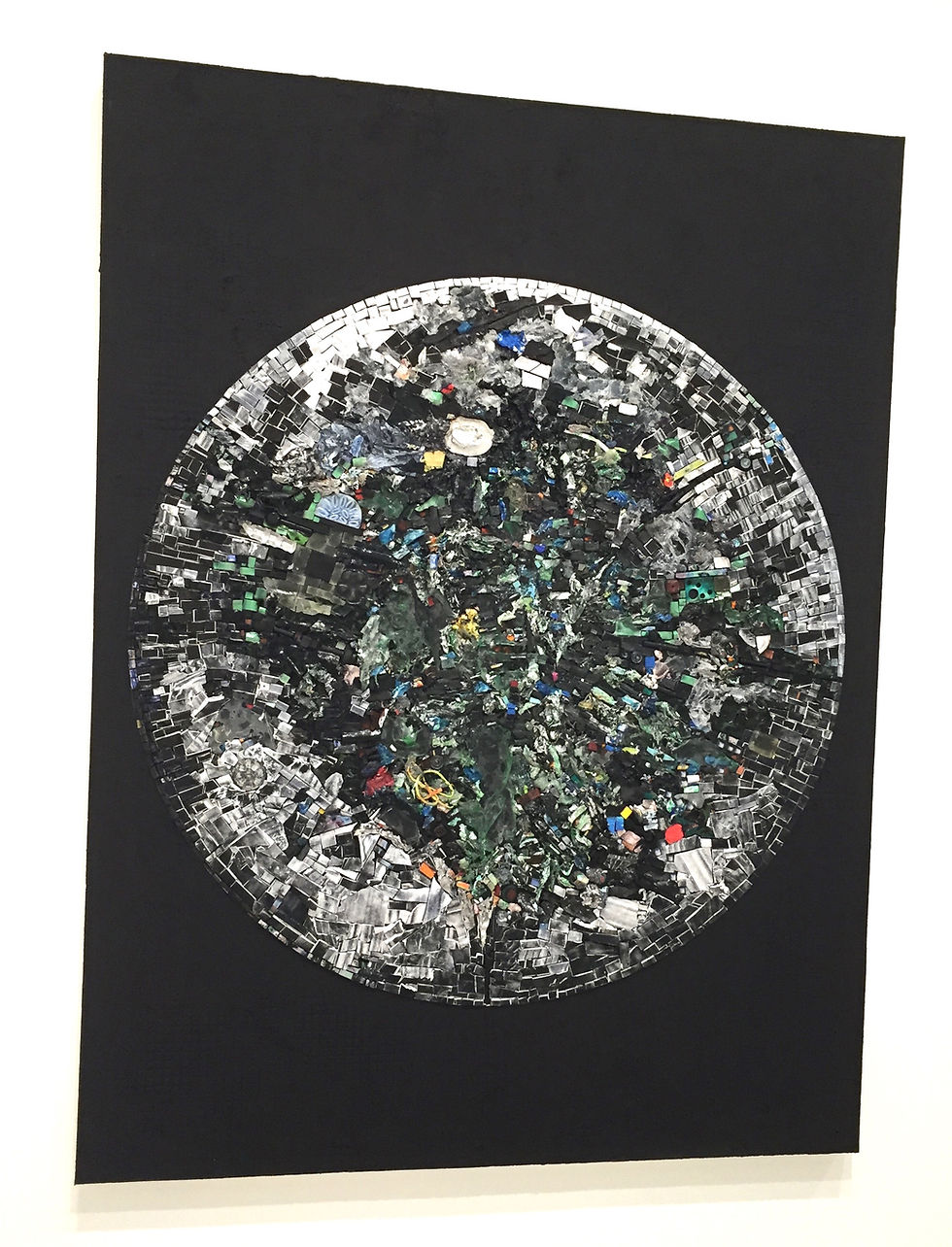Jack Whitten @ The Walker
- Paula Tiberius
- Dec 24, 2015
- 4 min read
Updated: Feb 8, 2023
The Jack Whitten exhibit at The Walker Art Center in Minneapolis is thrilling to see. An abstract expressionist painter and paint manipulator for fifty years now, he creates stunning works of deep resonance. I’m amazed that I’ve never heard of Whitten, but then again, I had never heard of the female abstract expressionist master Jay DeFeo either. Sometimes when you’re not a white man, you don’t get the same press….just sayin.’ Moving on.
Growing up in the deep south, Whitten became involved in the Civil Rights Movement and was deeply angered by the violent resistance to racial equality there, so he moved to New York City in 1960, and became an art student at Cooper Union. He was suddenly in the same world as the collagist Romare Bearden and painters Norman Lewis, Jacob Lawrence, Willem De Kooning and Barnett Newman, but his unique style would soon bust out into completely new territory.
Whitten moved to Tribeca in 1962 and witnessed the bulldozers breaking ground for the building of the Twin Towers, then about 40 years later, he saw them fall down. He said, “I watched it go up step-by-step and I watched it go down step-by-step. That gives me a kind of conviction. One of the most powerful accounts we have when something horrible goes down in history is the fact that somebody witnessed it.”
Well people, this man is a hell of a witness. A picture in a blog can’t capture the breathtaking quality of this humungous recent Whitten work below, called 9-11-01.

“When I discovered that paint was skin and therefore could be used as collage, that was a radical departure for me.” You can see in the detail here how he makes acrylic blocks of color and form. He casts them in all sorts of shapes and sizes, popping them out of their molds when they’re cured, and then laying them back down on the canvas or board.

A detail that shows the collage technique – he creates acrylic pieces and puts them back down on the canvas – it’s painting collage.
In an interview with Kenneth Goldsmith for Bomb magazine, Whitten said, “I took the paint up off the canvas and then put it back down on the canvas. This was a major breakthrough. I’m dealing now with paint as a collage, paint as sculpture. I have changed the verb “to paint”: I don’t paint a painting, I make a painting. So the verb has changed. And in doing that, I’ve broken through a lot of illusionistic qualities.”
This is a seminal work of Whitten’s from 1969, in which he “allows the fluidity to shift.” This was one of the pieces he did from the 60’s that gave him a window into the possibilities of of the medium.

Satori (1969)
In the 1970’s, he created a twelve foot tool called ‘the developer’ which was basically a big squeegee that he would drag across big pools of paint, and sometimes also objects in the way, to create works like this one, below. This was also a precursor to the collage style painting that came later, and an important step in his journey to learn the versatile properties of paint.

Pink Psyche Queen (1973)
Music has played a huge role in Whitten’s life, getting him through depressions and inspiring him to create pieces like this one below, an homage to Miles Davis. “I recognized the conceptual in his music, and its connection to soul,” he said. Whitten also played saxophone and hung out at Birdland and the Five Spot, talking to Davis when he could.

Homecoming: For Miles
“I have not been interested in the modernist concept of progression, the avant-garde notion of advancing in time…” he says in the gallery card for this stunning painting collage below. “My position has been closer to that of a cosmologist. in other words, we learn by going back in time. The life that we construct is a life that has been out there – we now know – for billions of years.” He believes that “Sun Ra was right on the money. Humans came here from outer space as minerals and chemicals.”
My mom and I stared at this painting for a long time. It jumps off the wall and grabs you by the eyeballs.

Black Monolith V Full Circle: For LeRoy Jones A.K.A. Amiri Baraka (2014)
In ArtForum, Whitten writes about the piece below, called Apps for Obama. “I still think about technology, about fracture, and about racial politics. My Apps for Obama, 2011, is a bright and cheerful painting that nonetheless features the debris of our age as attractive on a digital screen: an interface that fluctuates between imaging and materiality, but above all else, is paint.”
I love the way he plays with shapes and lets each little piece of the mosaic speak its own mind, dancing off the wall with its own twinkle and personality. Even if each of these ‘apps’ weren’t created from debris, (which definitely brings an extra layer of meaning), it would still have tremendous significance to me as a part of our cultural journey. Whitten has this visceral way of infusing wonder and hope into your soul, putting our tiny world in perspective.

Apps For Obama (2011)
Art in America asked Whitten if he had a utopian vision of abstraction and he said, “I see art as the only hope we have left. I don’t see it in religion or politics. If we as artists can’t take advantage of it, who can?”

The Jack Whitten exhibit is on at the Walker Art Center in Minneapolis until the end of January.

Yorumlar